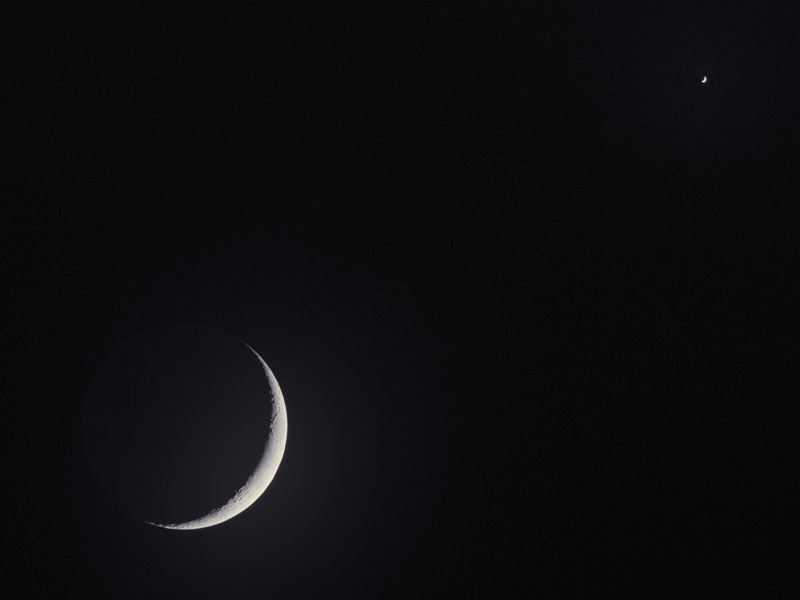
|
Credit & Copyright: Drew Sullivan
(Ancient Starlight)
Explanation:
Last Friday, the Moon and Venus shared the early
evening sky in a beautiful conjunction.
Separated by only
about 2 degrees, they also were both in a crescent
phase.
Just like our Moon,
Venus
can appear as a full disk or a
thin crescent.
Frequently the brightest object in the post-sunset or pre-sunrise sky,
Venus is so small that it usually requires
binoculars or a
small telescope to clearly see its phase.
This
telescopic
image of Friday's conjunction shows off the
similar crescent phases, with the tiny
crescent Venus at the upper right.
|
January February March April May June July August September October November December |
| |||||||||||||||||||||||||||||||||||||||||||||||||||||||
NASA Web Site Statements, Warnings, and Disclaimers
NASA Official: Jay Norris. Specific rights apply.
A service of: LHEA at NASA / GSFC
& Michigan Tech. U.
Based on Astronomy Picture
Of the Day
Publications with keywords: Moon - Venus - conjunction
Publications with words: Moon - Venus - conjunction
See also:
